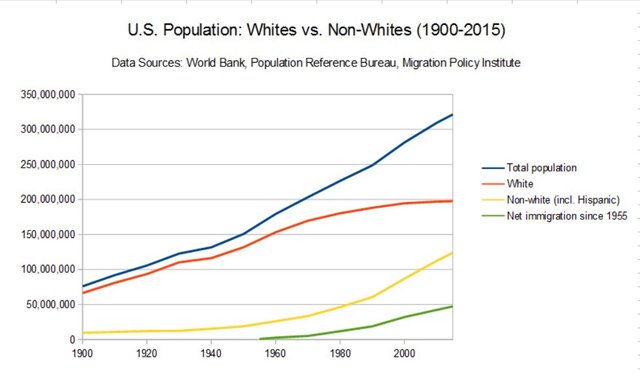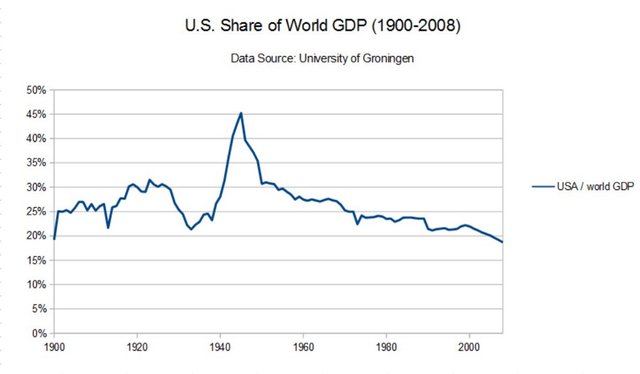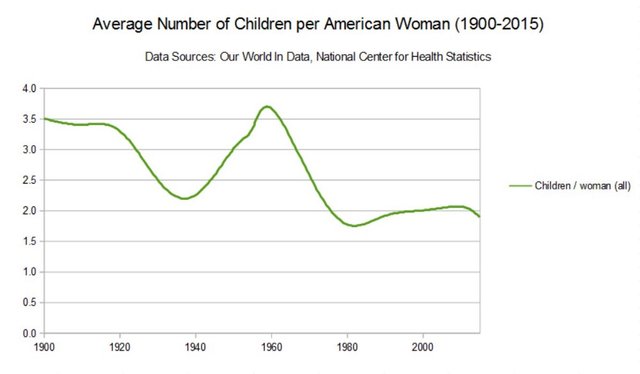The Changing Face of the U.S. Economy: This Graph Shows What Open Borders Are Doing to America

Graph 1. U.S. Population: Whites vs. Non.Whites (1900–2015)
The blue line in the graph above shows how the total U.S. population has developed since 1900. The red line represents white people's share of the population (not counting Hispanics). The graph shows that America been a white Christian nation for a long time, at least up until 1960, when U.S. demographics suddenly began to change.
Since 1980, the aging white demographic has been stagnating, while its non-white population, represented by the yellow line, has grown exponentially. As the green line shows, though, much of non-white growth didn't come from non-white births, but from open borders. In only half a century's time, nearly 50 million immigrants entered the country.
It's true that the United States has always been an "immigrant nation", but up until the Second World War, those immigrants had been mostly white, Christian and European. For centuries, no more than 10% of the U.S. population had been non-white. Today, non-whites make up almost 40% of the total population: they come from Latin America, Asia, India and the Arab World.
So what happened? What happened was the passage of Ted Kennedy's Immigration and Nationality Act of 1965. As Breitbart explains:
"The passage of the act marked a fundamental change in America's immigration policy: Rather than serving the interests of Americans and national unity by setting limits on immigration, the act put 'family unification' as the top priority, serving the interests of foreigners first."
Rather than investing in the white middle class, corporate lobbyists realized they could pay non-white immigrants far lower wages. Hijacked by corporations, the U.S. government began putting private profits before making long-term investments in its own people.

Graph 2. U.S. Share of World GDP (1900–2008)
But did open borders affect the economy as a whole? The graph above shows America's share of the global economy as measured by its gross domestic product. Rising from 20% to 30% during the roaring 1920s, the Great Depression hit the U.S. hard before rewarding the U.S. economy for its liberation of Europe from the Nazis.
In 1945, American economic activity briefly represented 45% of the world's economy - -American exceptionalism at work.
The American economy has since steadily lost a third of its share of the global economy. By 2015, the U.S. share had dropped from 30% back down to 20%, the same level as in 1900. Here's an important lesson to be learned: opening the borders to low-wage, non-white immigrants failed to strengthen the economy.
It would be inaccurate to put the blame for America's relative economic decline on immigrants. In fact, the decline came from within:

Graph 3. Average Number of Children per American Woman (1900–2015)
This graph shows the development of American fertility over time for both white and non-white women combined. From 1800 to 1900, the American family size had already dropped from 7 to 3.5 children per woman. During the 20th century, U.S. fertility further dropped to below two children per woman.
American fertility briefly boomed during the 1960s, the reward for having emerged victoriously from the Second World War. This was the baby-boom generation. Demographically speaking, baby boomers are the great white whale that helped elect Donald Trump into office.
Nonetheless, if white fertility does not increase, and borders remain open to non-white immigrants, then perhaps Americans ought to listen to this century-old warning:
"Thus, white men, of whatever country and however far removed from personal contact with colored competitors, must realize that the question of colored immigration vitally concerns every white man, woman, and child; because nowhere, absolutely nowhere, can white labor compete on equal terms with colored immigrant labor. The grim truth is that there are enough hard-working colored men to swamp the whole white world."[1]
If Americans of European descent don't treat the U.S. economy as their sole responsibility, the United States may already be headed towards becoming a gigantic new South Africa, an economic junkyard condemning whites to a fringe minority in the country their ancestors built.
If that's what Americans want, they might want to google what necklacing means.
- [1]T. Lothrop Stoddard, The Rising Tide of Color Against White World-Supremacy (New York: Charles Scribner's Sons, 1921), 270–71.